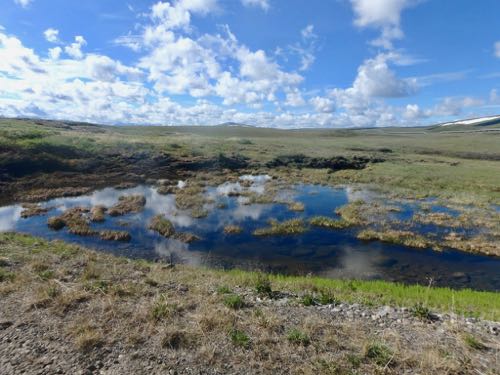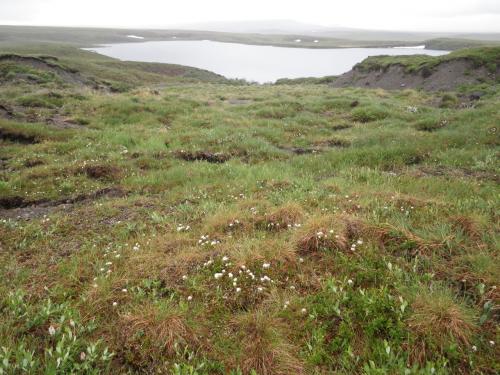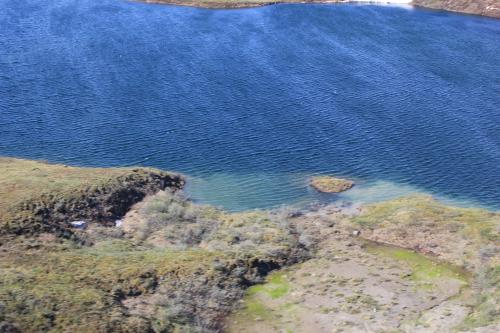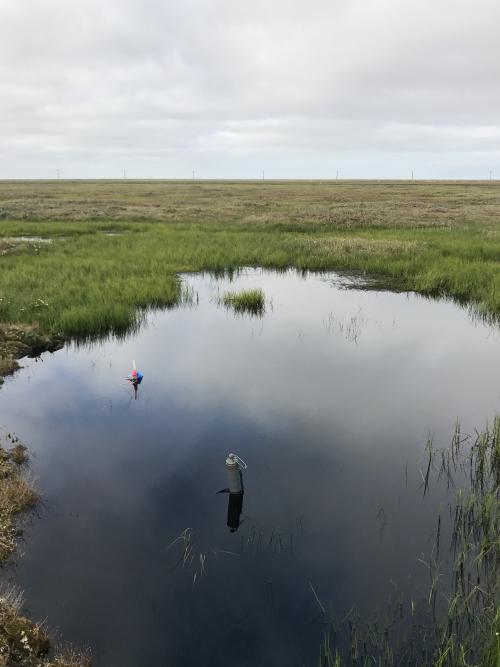When you speak of the tundra, most people will picture this desolate, frozen landscape. However, in reality, it's a vast, dynamic ecosystem that survives in extremes. One of the features I have been interested in is thermokarst. Thermokarst is when the permafrost melts and creates slumps, ridges, and sinkholes in the landscape. It is a direct result of climate change in the arctic and the consequences of thermokarst is unknown.




The Great Northern Swamp
When the arctic gets warm, and things start melting, the tundra springs into action. Plants green at an alarming rate, flowers bloom, animals do their animal things – you get the idea. But underneath it all, is the solid bedrock of permafrost. PermafrostPermanently frozen ground. is the layer of soil that doesn't melt. Just above permafrost you have the active layer. In the far reaches of the northern slope (like Barrow), the active layer may only be a few centimeters thick. This is one of the reasons why you won't see trees or other large vegetation, and this is because the root system cannot penetrate the permafrost layer and provide the anchoring and support that taller plants need. As you travel south through the tundra, the active layer becomes deeper. Around here at Toolik, it will get to be about 70 centimeters, and when you get back into the tree line, the active layer can be tens of meters deep. This is normal. The melting and refreezing of the soil each season is how life has evolved to stay alive. But what if more permafrost melts than expected on a consistent basis? That's the real question. It's not just about slumps, ridges, and sinkholes, it's about the incredible amount or organic matter that is suddenly released into the ecosystem through gasses and nutrients. What was locked in frozen storage is now beginning to decay, changing the soil and water in the tundra. It's releasing larger and larger amounts of CO2 and methane into the atmosphere. It's literally a swamp that covers the northern part of North America, Greenland, Europe, and Asia that's been held in stasis for millennia. Scientists here at Toolik and all across the Arctic region are trying to understand the effects that this could have on the immediate and global environment. As I have learned this month, there is not easy, fast, and clear answer to this or any question.


Comments